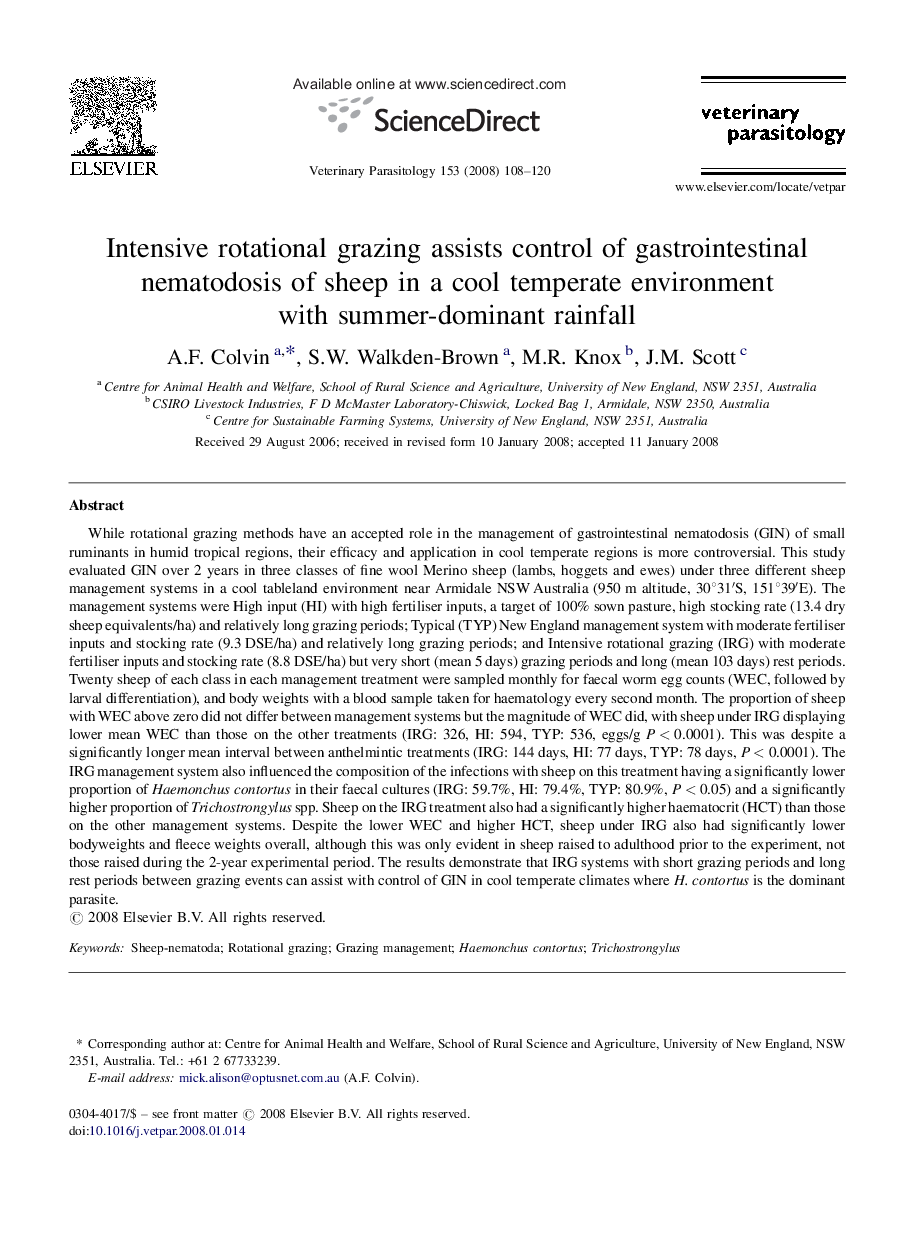| کد مقاله | کد نشریه | سال انتشار | مقاله انگلیسی | نسخه تمام متن |
|---|---|---|---|---|
| 2471612 | 1555770 | 2008 | 13 صفحه PDF | دانلود رایگان |

While rotational grazing methods have an accepted role in the management of gastrointestinal nematodosis (GIN) of small ruminants in humid tropical regions, their efficacy and application in cool temperate regions is more controversial. This study evaluated GIN over 2 years in three classes of fine wool Merino sheep (lambs, hoggets and ewes) under three different sheep management systems in a cool tableland environment near Armidale NSW Australia (950 m altitude, 30°31′S, 151°39′E). The management systems were High input (HI) with high fertiliser inputs, a target of 100% sown pasture, high stocking rate (13.4 dry sheep equivalents/ha) and relatively long grazing periods; Typical (TYP) New England management system with moderate fertiliser inputs and stocking rate (9.3 DSE/ha) and relatively long grazing periods; and Intensive rotational grazing (IRG) with moderate fertiliser inputs and stocking rate (8.8 DSE/ha) but very short (mean 5 days) grazing periods and long (mean 103 days) rest periods. Twenty sheep of each class in each management treatment were sampled monthly for faecal worm egg counts (WEC, followed by larval differentiation), and body weights with a blood sample taken for haematology every second month. The proportion of sheep with WEC above zero did not differ between management systems but the magnitude of WEC did, with sheep under IRG displaying lower mean WEC than those on the other treatments (IRG: 326, HI: 594, TYP: 536, eggs/g P < 0.0001). This was despite a significantly longer mean interval between anthelmintic treatments (IRG: 144 days, HI: 77 days, TYP: 78 days, P < 0.0001). The IRG management system also influenced the composition of the infections with sheep on this treatment having a significantly lower proportion of Haemonchus contortus in their faecal cultures (IRG: 59.7%, HI: 79.4%, TYP: 80.9%, P < 0.05) and a significantly higher proportion of Trichostrongylus spp. Sheep on the IRG treatment also had a significantly higher haematocrit (HCT) than those on the other management systems. Despite the lower WEC and higher HCT, sheep under IRG also had significantly lower bodyweights and fleece weights overall, although this was only evident in sheep raised to adulthood prior to the experiment, not those raised during the 2-year experimental period. The results demonstrate that IRG systems with short grazing periods and long rest periods between grazing events can assist with control of GIN in cool temperate climates where H. contortus is the dominant parasite.
Journal: Veterinary Parasitology - Volume 153, Issues 1–2, 6 May 2008, Pages 108–120